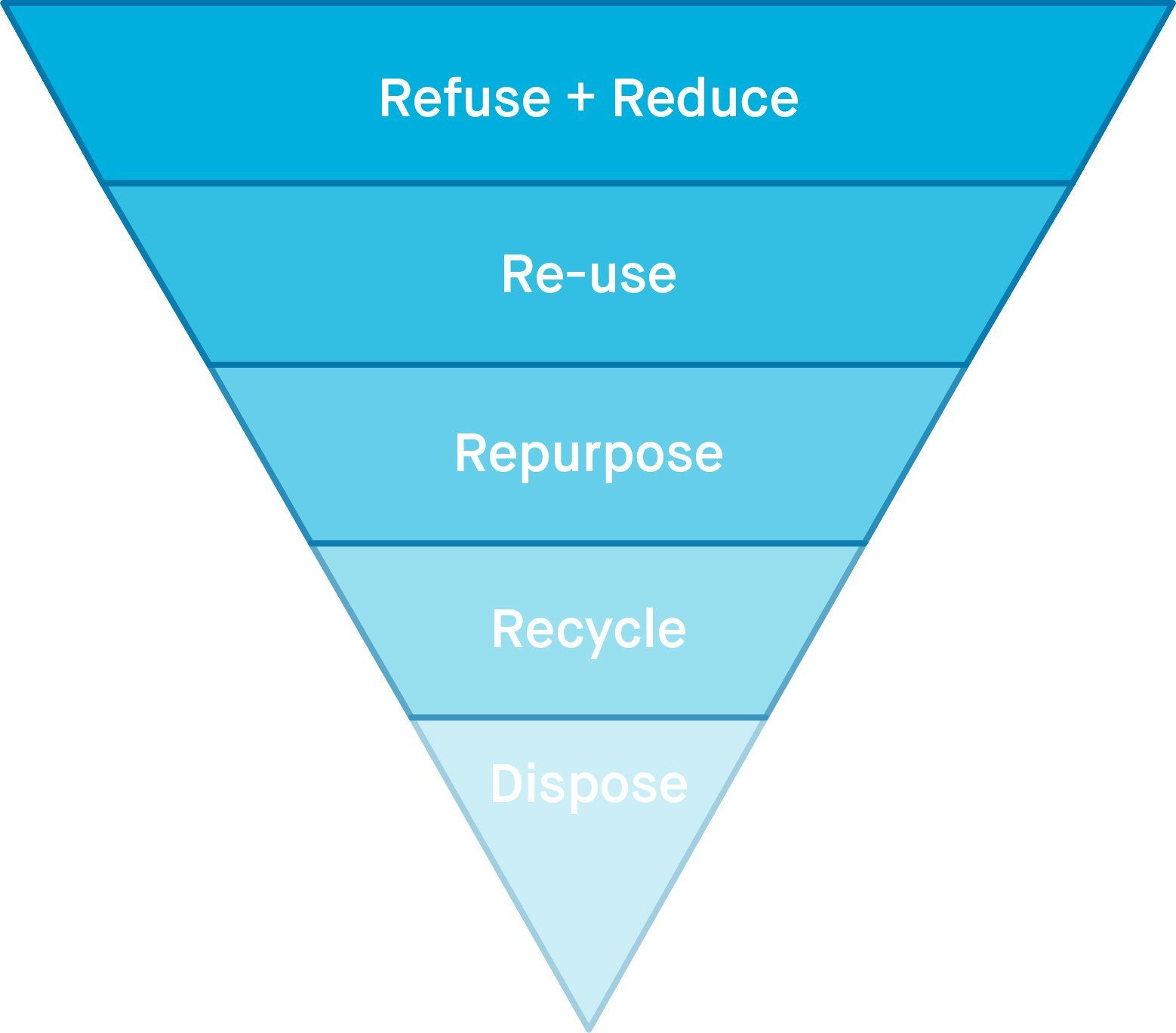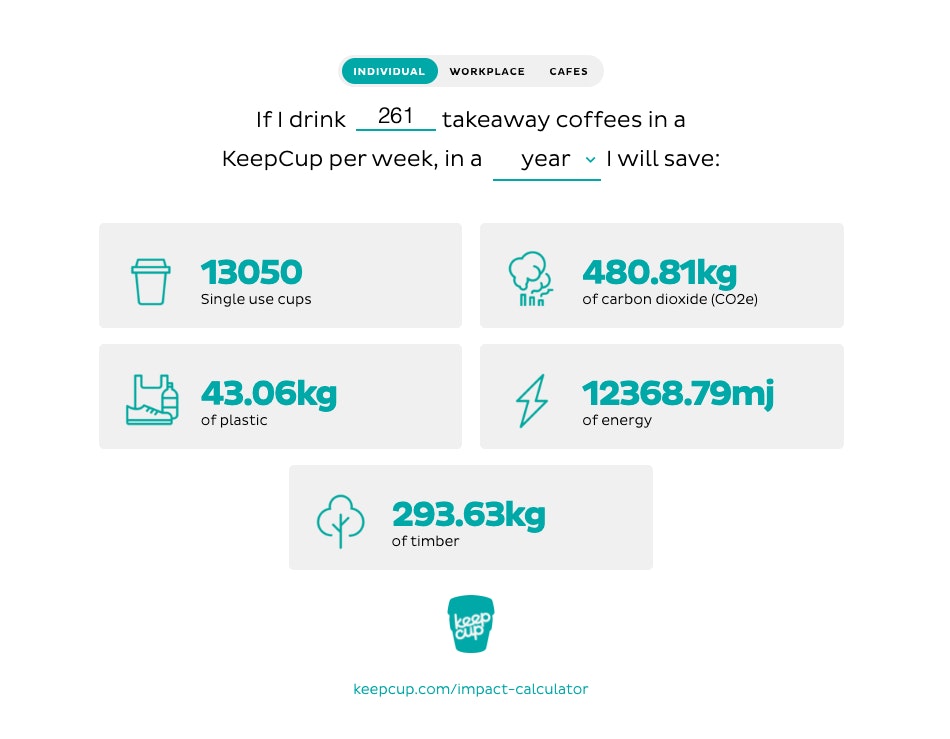do you want to view
How to: Reduce single-use coffee cups in the office
For many, coffee is a critical part of a workday or any day. However, single-use coffee cups don’t need to be part of this daily ritual. For an office of any size, single-use coffee cups and lunch packaging are among the easiest ways to move up the waste hierarchy and encourage your team to reduce and reuse before relying on recycling or composting.
I’m Lee Bright, Method’s Marketing Manager, coffee addict, educated waste professional and previously a barista for over a decade. So, I’ve got some insider knowledge when it comes to this topic.
You’re reading a Method article, so you’re probably already aware of the problem; let’s jump into some solutions to reduce single-use coffee cups and how actually to get your team to use them.

1. Problem: Individual responsibility
Often, many businesses take the first step to provide all staff with their own reusable coffee cup. This is a great step, and we definitely encourage it. However, this still relies on the individuals to have the motivation, time and opportunity to incorporate it into their daily routine.
Many, despite their best efforts or intents, will find it difficult to remember their cup; like those running to make the bus, others trying to manage to get the kids to the car for school drop off before work, or simply not remembering it because they haven’t had their coffee yet.
But, there are a lot of solutions available.
Practical solutions:
- Create a mug library - build up a stash of reusable cups in the office and keep them somewhere visible that reminds people to grab them when heading out to get their coffee.
- Ask the most popular cafes in your area to hold a stash of cups for your team to use when they grab their coffee on the way into the office. We did this when I worked in cafes; the baristas probably already know who is on your team, most baristas hate wasting single-use coffee cups, the business hates paying for them, and it encourages your team to patronise the cafe - it's a win-win-win-win!
- You can also encourage cafes to take part in reusable coffee cup systems like Green Caffeen, which lets people ‘check out’ a reusable cup like a borrowed book and return it to participating cafes.
- If you’re in a bigger office, find a service that can do all of the hard work for you! Cercle is one of many in Australia, who provide the infrastructure and service to make it all work like magic. Since April 2021, they have already removed 219,220 coffee cups from going to waste. Check them out: https://www.cercle.com.au/.
- Highlight the local cafes that provide discounts for bringing your own cup, especially for those who drink more than one cup a day; the savings can really stack up.
2. Problem: People think the problem is solved
There is no judgment here for falling for the allure of a compostable cup. I fell hook, line and sinker in 2017 when they first entered the market and I was managing a cafe.
Compostables can help people feel better about their choice, and there is a discussion to be had about material sourcing and so forth, but many consumers aren’t aware that compostables don’t break down effectively in landfills; many places don’t have access to commercial composting facilities to deal with the cups, and reducing material usage or reusing is always better.
Practical Solutions:
Educating on topics like compostables is really important for people to make informed decisions. However, it's a long-term solution to a significant problem, and it doesn’t target the issue of ultimate waste reduction in your office. Some ideas on tackling ambivalence:
- Make it personal - we are all more likely to understand and believe a numbers-driven message that is specific to our circumstances. Collect single-use coffee cups separate from other waste in your office for a while and use them to help people understand the environmental savings that could be made by using a reusable cup.
- I’m forever referencing this calculator from KeepCup that helps calculate the environmental savings moving from single-use to a KeepCup: https://nz.keepcup.com/impact-calculator.
 Resource reduction from one person using one less single use cup on work days from the Keep Cup Impact Calculator
Resource reduction from one person using one less single use cup on work days from the Keep Cup Impact Calculator
- Make it a competition - collect coffee cups in separate bins across your organisation and gamify it. By team, level, building, city, or even country, see who can reduce single-use coffee cups per person the most and reward those doing the best.
- Make it top-down - as with most things in an office, people are inherently going to care more if their leaders participate and make it clear that it's something they care about. Have leaders engage in comms, have them post about their participating and celebrate those who are getting on board - it makes such a difference.
As an aside, how do we get coffee cups separated?
Many of the ideas I pose in this article suggest collecting the cups separately, which can be a challenge on its own. So here are some of our tips for getting cups or any material separated:
- Colour code your receptacles and clearly label the coffee cup bin as different from the other streams. Additionally, add signage and posters that stand out.
- Don’t make it too specific - ideally, find a solution where people don’t need to figure out the different types of cups, e.g. compostable or plastic. A bin for “single-use coffee cups” will be most effective.
- Make it consistent - a coffee cup bin in the break room won't capture all the cups; keep your bins in complete stations to make it easy for users and not rely on them to remember to visit the break room.
- Involve your green team, leaders or others passionate about waste and the environment to encourage behaviour change.

3. If all else fails, find an end-of-life solution
Maybe your office still needs work on some of the more fundamental aspects of waste and recycling; staff are still generally ambivalent to waste and recycling, or you can’t get them to let go of their personal desk bin.
In this case, you might need to look at a way to recycle single-use cups or other end-of-life solutions for them.
When implementing sustainability initiatives, it’s important to do the best you can with your circumstances; we always quote Anne-Marie Bonneau, the Zero Waste Chef: “We don't need a handful of people doing zero waste perfectly. We need millions of people doing it imperfectly.”
This one is harder to provide specific advice for because it's so reliant on what is available where you’re located. The easiest is to ask your existing waste provider if they have a recycling or composting solution you can use - otherwise, search for local providers in your area.
Some providers off the top of my head include:
- First Mile have a coffee cup recycling program - London, England
- Green Gorilla’s “We Compost” program - Auckland, Aotearoa, New Zealand
- Compost Connect - Australia